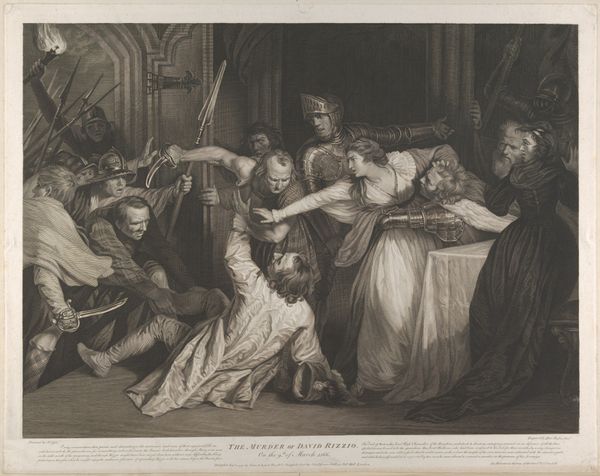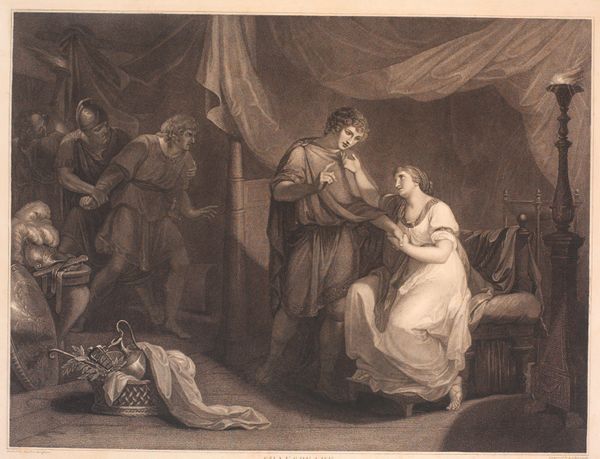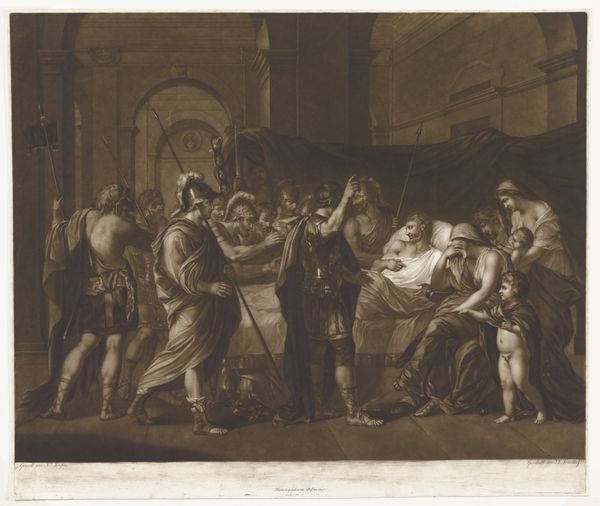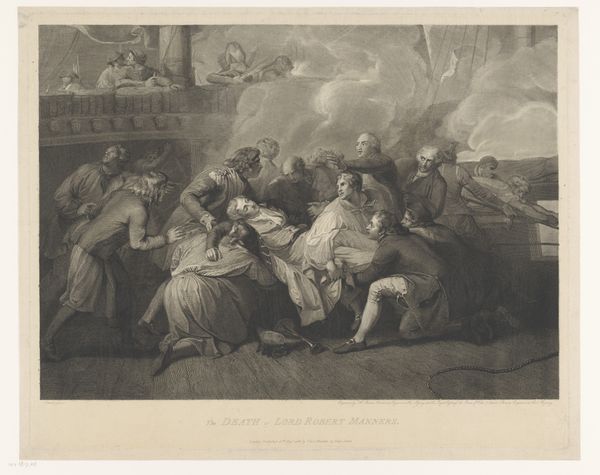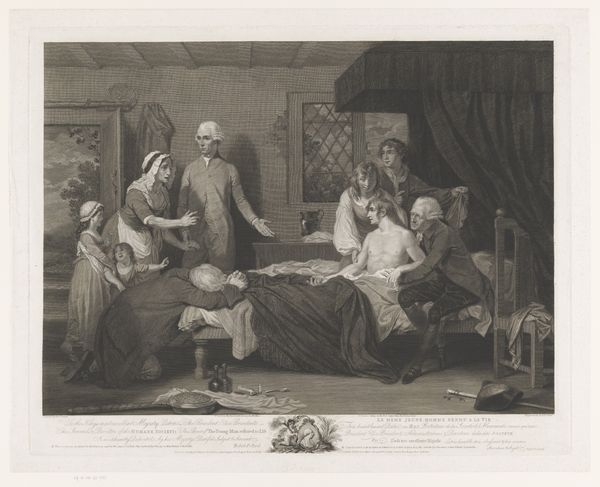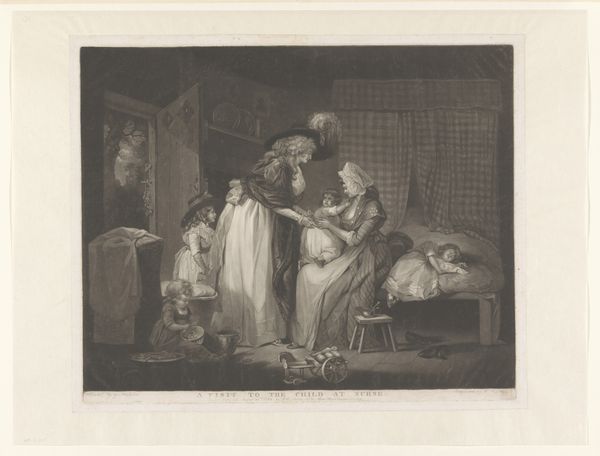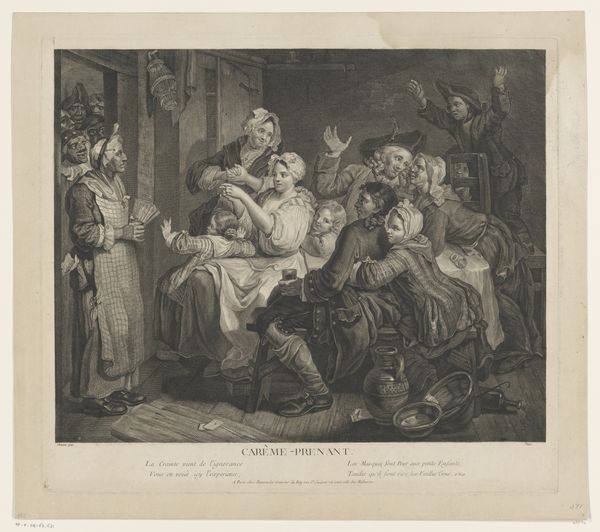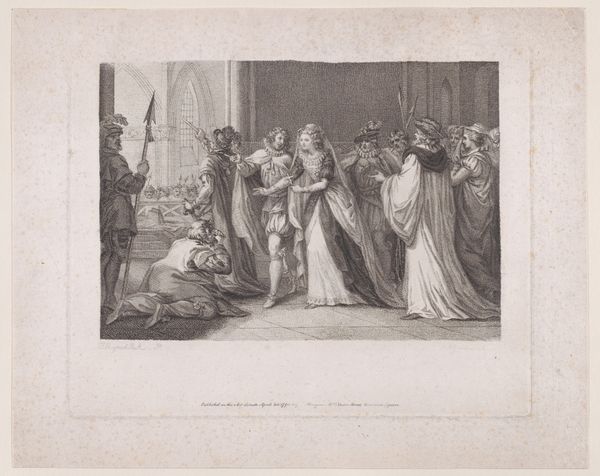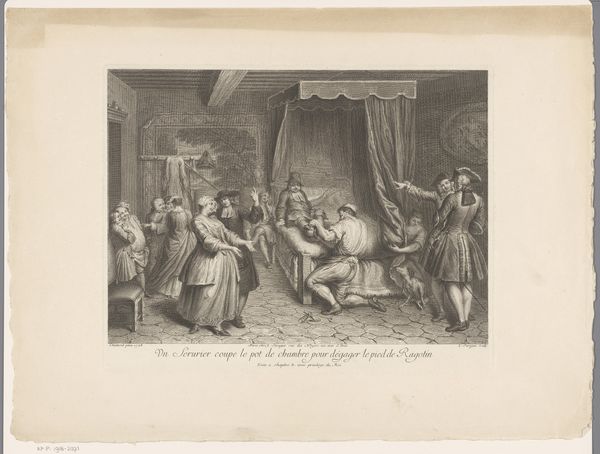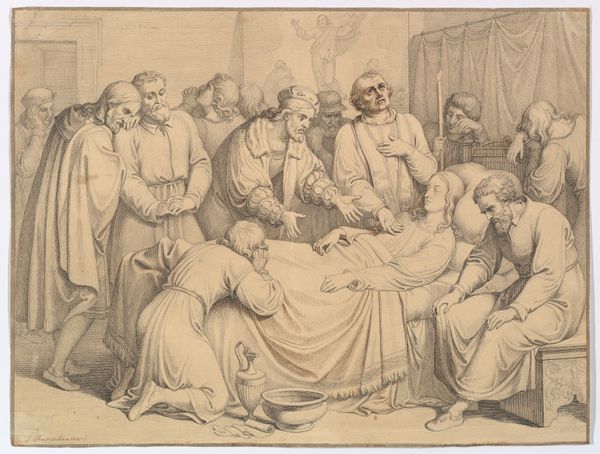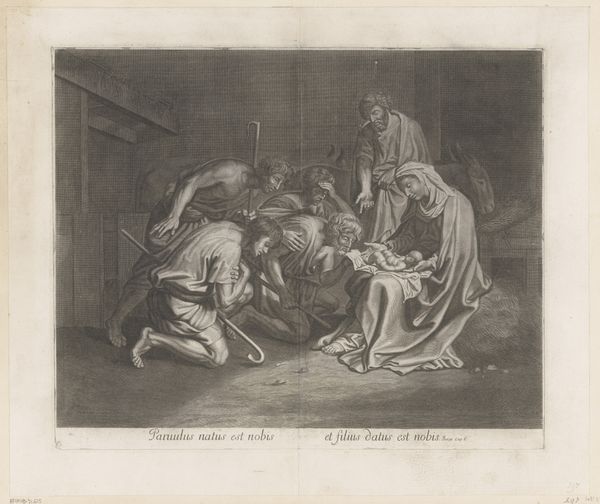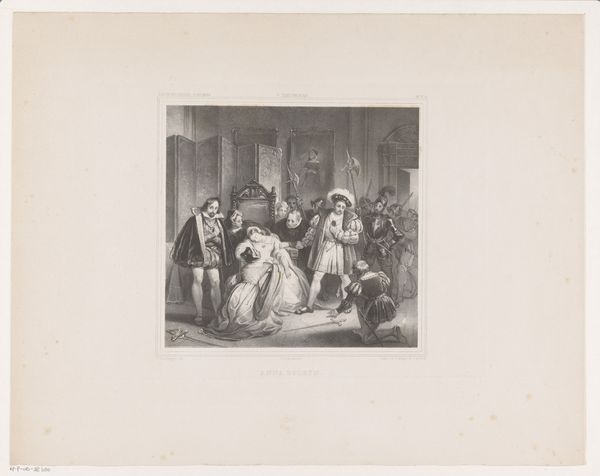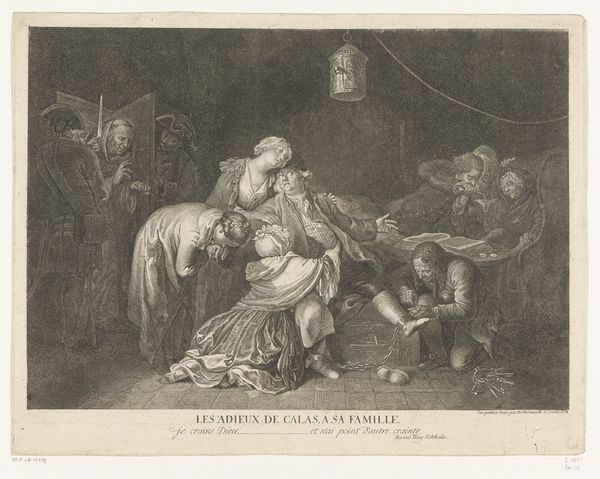
The Murder of David Rizzio (Mary, Queen of Scots witnessing the murder of David Rizzio) 1791
0:00
0:00
drawing, print, engraving
#
drawing
#
narrative-art
# print
#
figuration
#
19th century
#
men
#
line
#
history-painting
#
engraving
#
sword
Dimensions: Plate: 19 15/16 × 24 9/16 in. (50.7 × 62.4 cm) Sheet: 20 1/4 × 26 5/8 in. (51.5 × 67.7 cm)
Copyright: Public Domain
Editor: So, here we have William Dickinson’s 1791 engraving, "The Murder of David Rizzio," depicting a rather gruesome historical moment. The figures are all crammed into this one space, weapons drawn, and there's a clear sense of chaos and violence. What stands out to you the most when you look at this scene? Curator: It’s the stark contrast Dickinson creates. The scene is undeniably brutal, bodies entangled in a moment of deadly violence, but consider it through the lens of 18th-century theatre. It’s staged, isn’t it? Look at Mary, Queen of Scots – almost a passive observer, beautifully lit, witnessing this brutal act. Is she horrified, complicit, or simply trapped in the drama of her own life? The tight, almost claustrophobic composition amplifies the tension. Editor: That's interesting, the idea of it being staged. I was so focused on the violence, I missed that sense of theatricality. What does that staging tell us about the context in which Dickinson created this piece? Curator: He's not just illustrating history; he's interpreting it. Court intrigue, power struggles, and personal betrayals all culminate in this single, violent moment. The meticulous details, like the scattered sheet music on the floor, remind us of Rizzio's role as a musician and the cultural sophistication that's being destroyed in this act. Editor: I hadn’t even noticed the sheet music! So, it's not just a murder, but also the silencing of art and culture? That adds another layer entirely. I’ll definitely be thinking about that. Thanks! Curator: Indeed! Dickinson captures history but interprets through aesthetic decisions; that's an artist asserting his own commentary and values to elevate simple document to conversation. It also suggests there's always another story—another perspective that demands exploration.
Comments
No comments
Be the first to comment and join the conversation on the ultimate creative platform.
